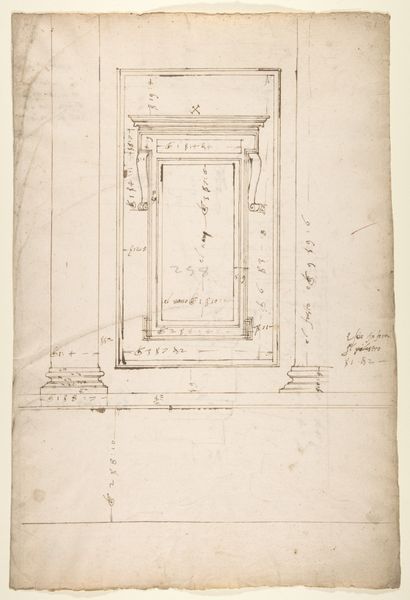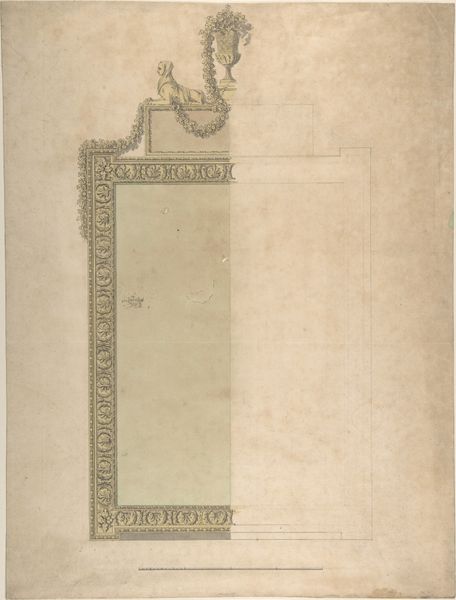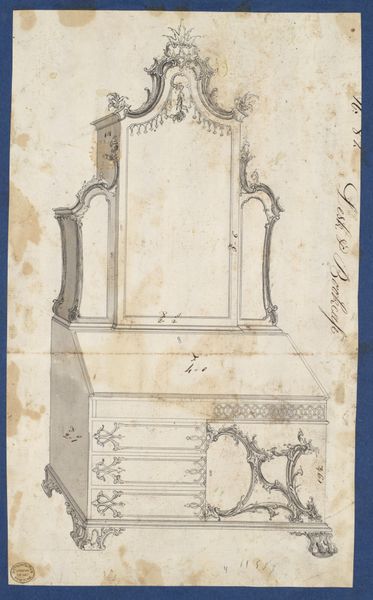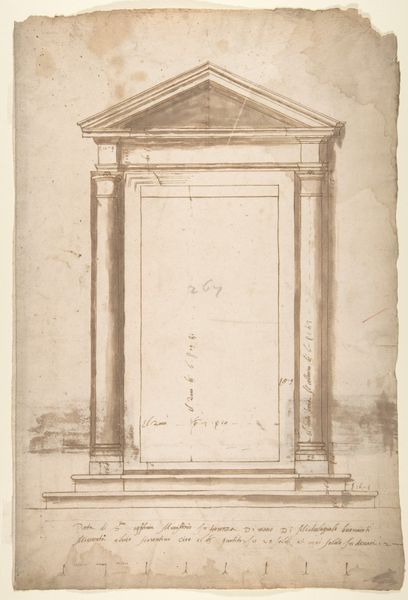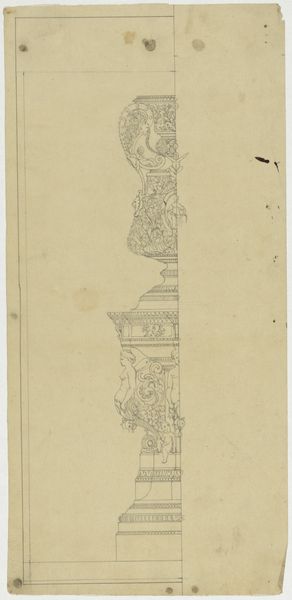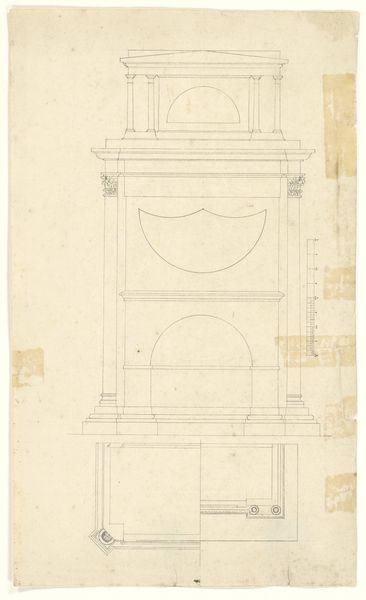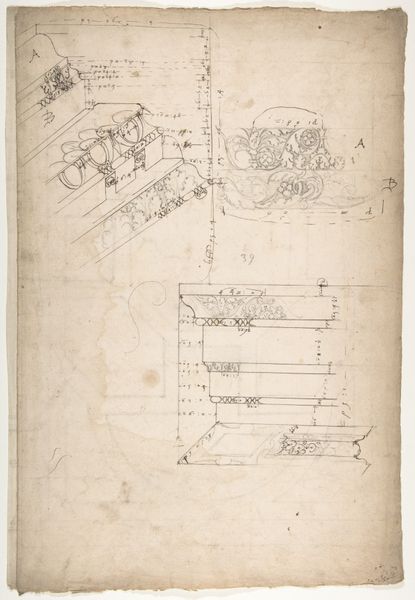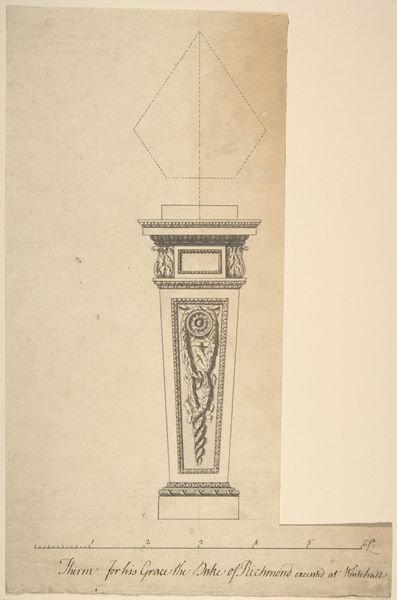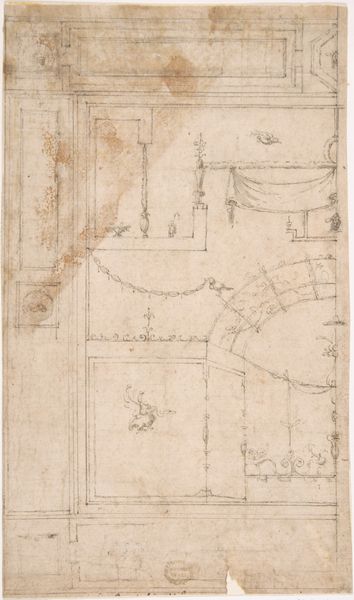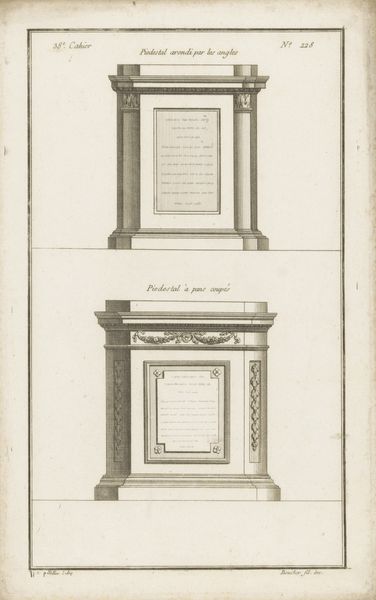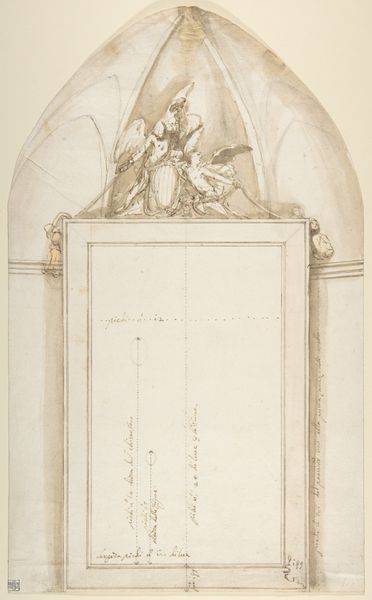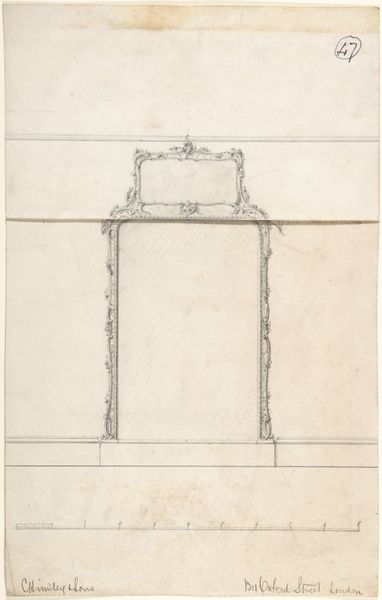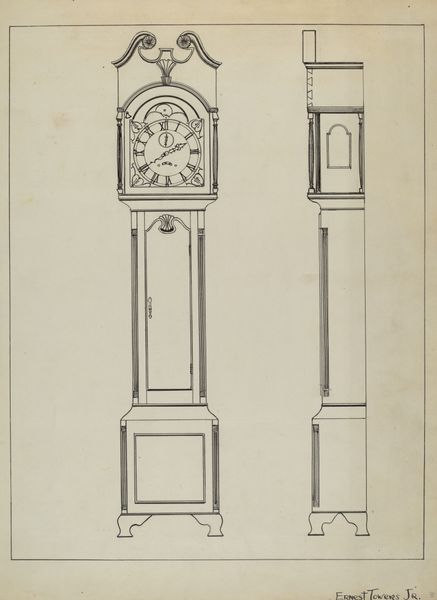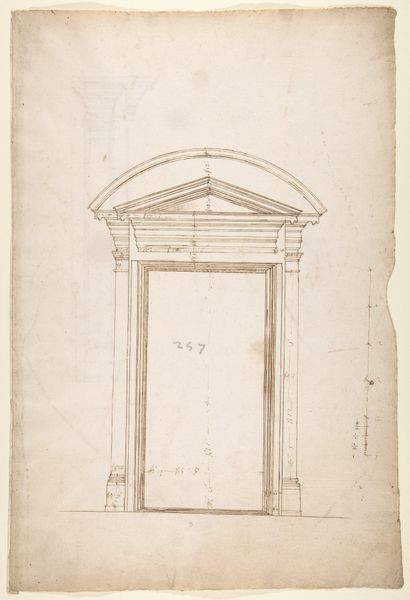
Udkast til et monument med en buste af en ung mand med lokker (Rafael). Opstalt, vandret snit og profiler 1797 - 1800
0:00
0:00
drawing
#
portrait
#
drawing
#
neoclacissism
#
form
Dimensions: 250 mm (height) x 174 mm (width) (bladmaal)
Curator: This is a drawing by Nicolai Abildgaard, titled "Udkast til et monument med en buste af en ung mand med lokker (Rafael). Opstalt, vandret snit og profiler", created around 1797 to 1800. It's currently held at the SMK, the National Gallery of Denmark. Editor: My initial impression is one of almost haunting fragility. The wispy lines and faded paper give it a tentative, dreamlike quality. Is it meant to project this ethereal nature? Curator: In part, I believe so. As a Neoclassical artist, Abildgaard was keenly interested in the visual structure underlying the ideal form. Look at how he meticulously outlines the geometric elements—the precise angles, balanced proportions. This elevates the rational above mere emotional response. Editor: But the choice of Rafael, signified by "the bust of a young man with locks," invokes such romantic ideas about artistic genius. What does this signal about its greater cultural importance? Curator: It aligns with Neoclassical artists idealizing specific historical periods. Rafael’s embodiment of Renaissance artistic standards aligns with the classical values that Neoclassicism embraces, and functions here as a direct homage. The composition is not purely an exercise in form but a cultural statement that honors this period. Editor: So it acts as a memory bank that can stimulate thought about these revered ideas. By presenting a unified ideal, it taps into powerful cultural sentiments associated with art, history and cultural memory. The symbol becomes an object that contains these ideas. Curator: Precisely. And by examining these lines, one sees a focus on intellectualism beyond romantic sensitivity. The overall structure reflects those aesthetic and intellectual priorities of the Neoclassical moment. Editor: It's interesting to see the different ways one might consider "form" both symbolically, as an iconographic memory prompt, and objectively as structure, as its physical lines representational content and composition. Curator: Indeed. These opposing and interacting factors reveal so much about this era’s aesthetic aims.
Comments
No comments
Be the first to comment and join the conversation on the ultimate creative platform.
